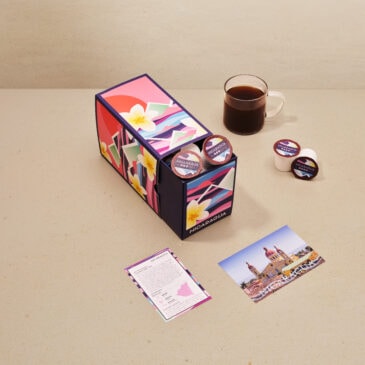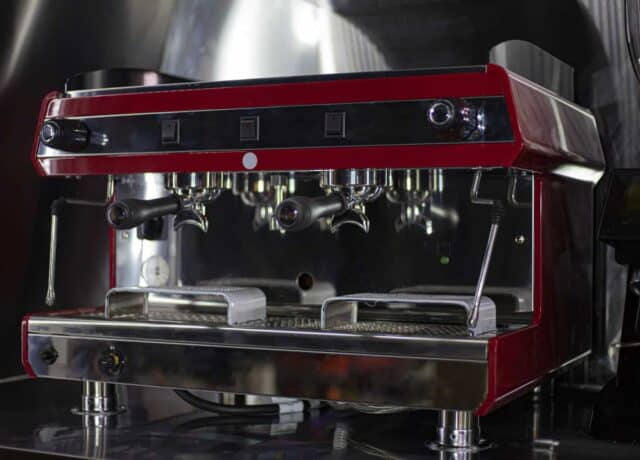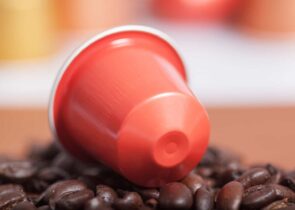Keurig coffee brewers have changed how we make coffee at home and in the office. If not for these single-use coffee machines, we’d be lost without the convenience of inserting a disposable pod full of ground coffee. It also means making just enough delicious coffee for one instead of dumping a half-full carafe down the drain.
But these perks won’t get you out of clean-up duty. A Keurig still needs some TLC to keep running efficiently and give you great-tasting coffee. Let’s review the steps you need to take to clean a Keurig needle without a tool.

"The best coffee pod I've ever tasted"
Yes, we mean that. Finally, specialty coffee for your KCup machine, roasted fresh to your order by our friends at Atlas Coffee in Austin, TX! Get 50% OFF to try it with code ROASTYPODS
I Lost My Keurig Tool! Now What?
Don’t fret! Even though you’ve lost or misplaced the tool that came with your Keurig, you can still clean the entrance needle and exit needle. All you need is a regular paper clip or a toothpick.
Signs that you need to clean the needle include your cup of coffee being only half full and water beginning to leak from the machine. Your Keurig may also start sputtering or working slowly. In some cases, you may notice loose coffee grounds spilling out into the cup or on the counter.
All of these signs point toward a clogged needle! When the needle gets clogged, water can’t pass through the pod to make your morning coffee. To prevent or fix this, clean your Keurig K-cup needle at least once a month. Let’s take you through the steps to free a Keurig needle of debris without a needle cleaning tool.
Cleaning Steps to Take
- The first thing you’ll need to do is unplug your Keurig coffee machine. You don’t want to shock and injure yourself.
- Second, remove the K-cup holder from the coffee machine. To access the pod holder, open up the handle, grab the top of the pod holder, and use your other hand to push on the holder from the bottom. If you’re not sure where the pod holder is, it’s where you insert your coffee pod to make coffee.
- Once you’ve got the pod holder out, you need to take it apart to remove the funnel. The funnel sits on the bottom of the holder, and if you grab both ends, you should be able to free the funnel. If the connection is too tight, you can run the holder under hot water.
- Next, get your aforementioned paper clip or toothpick. Insert it into the small tube on the bottom of the pod holder. To do this, you’ll need to straighten out the paper clip and flip the pod holder upside down.
- You’ll want to move the paper clip or toothpick around to free any clogged coffee grounds or debris. Be careful not to try to poke the clip or toothpick through the entire tube. You don’t need to press down too hard as you could damage the needle.
- After you’ve loosened the clogs, run the pod holder and funnel under fresh water. After rinsing these pieces, wipe them down with a gentle cloth. Watch the needle and avoid contact with your bare skin during this process.
- If you don’t want to hand wash and air dry the pod holder and funnel, you can place them on the top rack of your dishwasher. Be sure to use the air-dry setting on your dishwasher.
- In addition to the needle in the pod holder, there’s one under the brew head. You’ll notice it underneath the top of the machine when you lift the handle.
- Again, you’ll want to use your paperclip or toothpick to gently loosen any debris and dirt stuck on the needle. You’ll need to do this on both sides of the needle but without too much force. Be careful as contact can lead to injury.
- After the pod holder and funnel are dry, snap them back together. You’ll notice an audible click.
- Put the pod holder back in your Keurig, aligning the two tabs on the bottom and the single tab on the top. You should be able to snap it in and hear a click.
- Finally, you’ll want to run through two brewing cycles using clean water. Fill the water tank with water, plug it back in, and place a container underneath to catch the liquid. Use the biggest coffee cup size during these cycles.
- After the second rinse cycle completes, you can start using your Keurig to make your morning cup of coffee again!
What if I Have a Keurig 2.0?
Luckily, the needle cleaning process is identical on a Keurig 2.0. You’ll follow the same straightforward process as outlined above.
Should I Clean Other Parts?
To keep your Keurig in tip-top shape, you’ll also want to change out the water filter. On average, you’ll need to swap it out every two months. But if you’re really into brewing coffee and want to take some proactive steps, you may need to change that filter more often.
As part of your coffee machine maintenance routine, you should also plan on descaling your Keurig K-cup machine every once in a while. Descaling removes hard water deposits and other minerals that can build up. To descale your Keurig, you can buy a commercial cleaner or make a homemade descaling solution of vinegar and water.
Before You Go
Regularly cleaning the Keurig needle is something you need to do if you want your coffee maker to keep working. Without proper cleaning, you’ll notice a decline in the performance of your Keurig. And, worst of all, your cups of coffee won’t taste as good.
Remember that you don’t need a special tool to keep your Keurig needle clean. Using the paperclip method, all you need is a straightened-out paperclip or a toothpick to help loosen debris and coffee grounds. Once you’ve got the steps down, you’ll find it doesn’t take much time to go through the entire process.
Here are some video tutorials and additional resources on keeping these popular coffee machines clean.
- Video on how to clean Keurig needle without a specialized needle cleaning tool: https://www.youtube.com/watch?v=2-oqU5ciuK4
- Cleaning the needles on Keurig 2.0: https://www.youtube.com/watch?v=NDdUHMsql_g
- How to clean your Keurig with vinegar: https://www.hgtv.com/lifestyle/clean-and-organize/how-to-clean-your-coffee-maker
- How to descale and clean your Keurig coffee maker: https://www.youtube.com/watch?v=-zLVzzSeHmA
- How to clean a Keurig coffee maker: https://www.womenshealthmag.com/life/a29588174/how-to-clean-a-keurig/
Happy Caffeinating!







